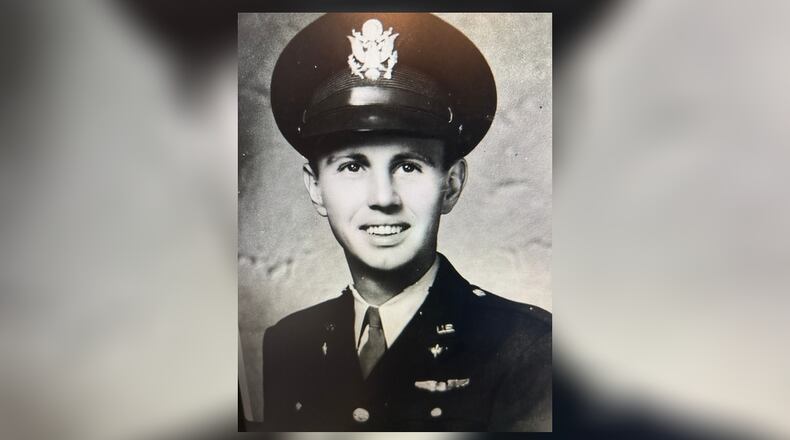Corson was accounted for the Defense POW/MIA Accounting Agency (DPAA) on Sept. 22, 2023 after his remains were exhumed in March 2019 from Normandy American Cemetery, Colleville-sur-Mer, France, for laboratory analysis and identification, according to the military.
His remains were flown to Cincinnati Northern Kentucky International Airport on Friday night, and they were picked up by Mark Spaulding, president of Wilson-Schramm Spaulding Funeral Home in Middletown. A graveside service will start at 10 am. Wednesday in the white cross section of Woodside Cemetery, Spaulding said.
It’s the first time in his more than 20 years in the funeral home business to see someone buried in that section of the cemetery because most buried there died in the 1940s and 1950s, Spaulding said.
The burial will include full military honors and a 21-gun salute, Spaulding said.
He called handling the arrangements of a WWII pilot “an absolute honor.”
The funeral home has been working with the military for months, Spaulding said.
In the last several days, Spaulding said the “pieces to the puzzle” came together and the arrangements were finalized.
Corson doesn’t have any relatives in the Middletown area. A nephew, Dan Corson, his namesake, lives out of state.
A few years ago, a propeller blade on Corson’s B-17 was transferred from a WWII museum in France to the Middletown Historical Society, said Sam Ashworth, a local historian.
Even before the Dec. 7, 1941, Pearl Harbor attacks, Corson, then a teller at Oglesby-Barnitz Bank in Middletown, enlisted in the U.S. Army Air Corps.
“He was carving out his career,” Ashworth said.
Then his life was cut short on the morning of Dec. 20, 1942. About 60 German FW-190 fighters attacked the formation from above, Ashworth said. According to eyewitness accounts, Corson’s plane went into a steep dive after repeated attacks. The tail broke off, and the tail gunner fell out and his chute opened.
One of those witnesses was Jean Erisay, 10 years old at the time. The young boy went to the crash site with his two uncles and gathered the housing of a camera and an oil can.
From those two small pieces of the B-17 — named Danellen after Corson’s parents, Dan and Nell — Erisay built a World War II museum in 1994 in honor of the American forces that liberated France 50 years earlier.
One small section of the 5,000 square-foot Musee de Tosny housed the two original artifacts and other pieces from the Danellen, including one of the propeller blades unearthed 30 years after the crash.
Erisay and his wife, Lucienne, have died and the museum has closed, Ashworth said.
About the Author

